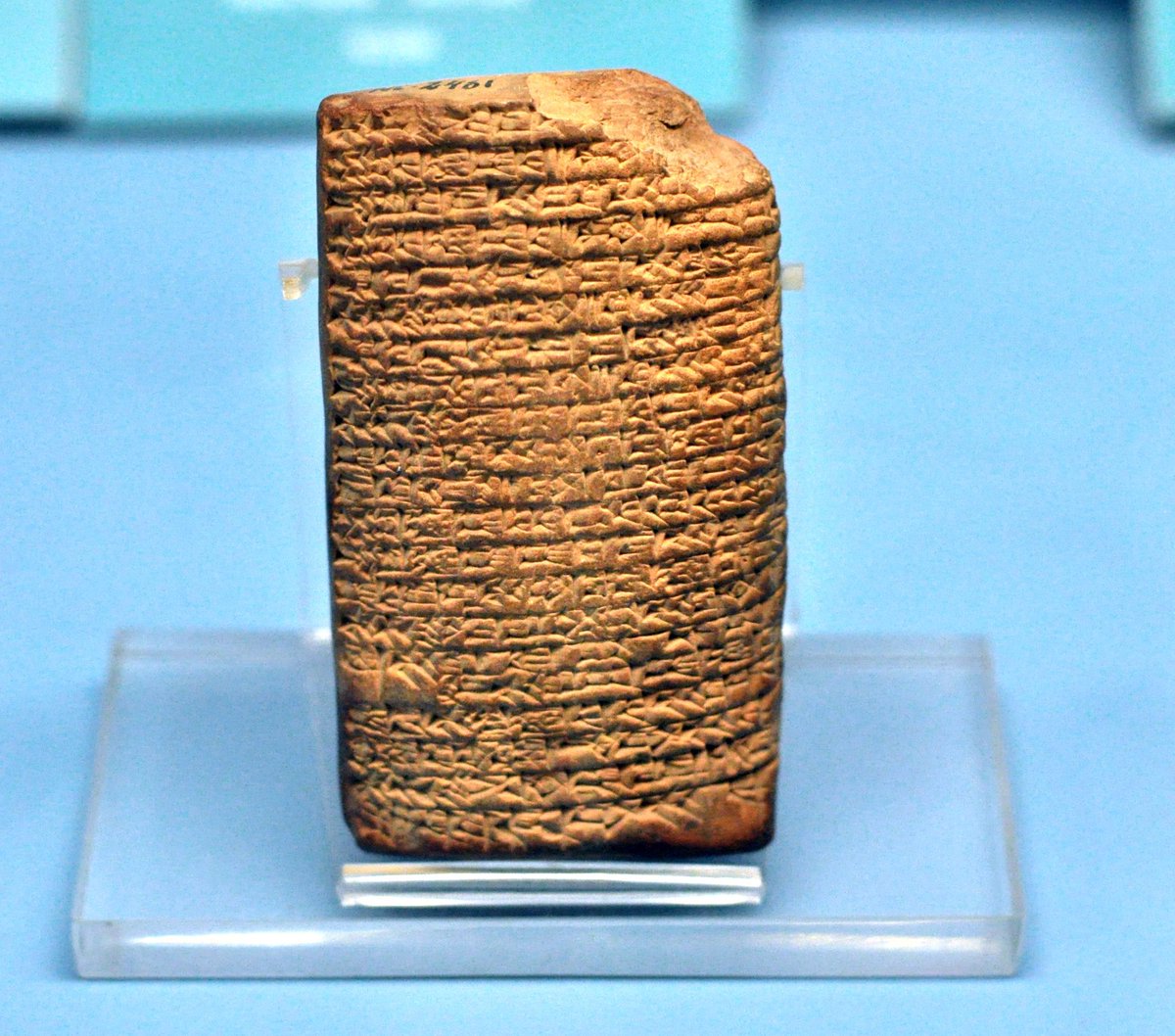
This cuneiform tablet from Nippur is the oldest known love poem, dating back to the Neo-Sumerian Period, 2037-2029 BCE. The tablet of the Love Song for Shu-Sin was taken to the Istanbul Museum where it was stored, untranslated and unknown, until 1951. #valentinesday2021 

Then, the famous Sumerologist Samuel Noah Kramer came across it while translating ancient texts. It was not just a love poem, but a part of the rite, known as the sacred marriage in which the king would symbolically marry the goddess Inanna, ensuring fertility and prosperity.
"Bridegroom, dear to my heart, Goodly is your beauty, honeysweet,
Lion, dear to my heart, Goodly is your beauty, honeysweet.
You have captivated me, let me stand tremblingly before you.
Bridegroom, I would be taken by you to the bedchamber...
Lion, dear to my heart, Goodly is your beauty, honeysweet.
You have captivated me, let me stand tremblingly before you.
Bridegroom, I would be taken by you to the bedchamber...
..You have captivated me, let me stand tremblingly before you.
Lion, I would be taken by you to the bedchamber.
Bridegroom, let me caress you,
My precious caress is more savory than honey,
In the bedchamber, honey-filled,
Let me enjoy your goodly beauty,
Lion, let me caress you..
Lion, I would be taken by you to the bedchamber.
Bridegroom, let me caress you,
My precious caress is more savory than honey,
In the bedchamber, honey-filled,
Let me enjoy your goodly beauty,
Lion, let me caress you..
...My precious caress is more savory than honey.
Bridegroom, you have taken your pleasure of me,
Tell my mother, she will give you delicacies,
My father, he will give you gifts.
Your spirit, I know where to cheer your spirit,
Bridegroom, sleep in our house until dawn...
Bridegroom, you have taken your pleasure of me,
Tell my mother, she will give you delicacies,
My father, he will give you gifts.
Your spirit, I know where to cheer your spirit,
Bridegroom, sleep in our house until dawn...
...Your heart, I know where to gladden your heart,
Lion, sleep in our house until dawn.
You, because you love me,
Give me pray of your caresses,
My lord god, my lord protector,
My Shu-Sin, who gladdens Enlil’s heart,
Give my pray of your caresses...
Lion, sleep in our house until dawn.
You, because you love me,
Give me pray of your caresses,
My lord god, my lord protector,
My Shu-Sin, who gladdens Enlil’s heart,
Give my pray of your caresses...
...Your place goodly as honey, pray lay your hand on it,
Bring your hand over like a gishban-garment,
Cup your hand over it like a gishban-sikin-garment."
Bring your hand over like a gishban-garment,
Cup your hand over it like a gishban-sikin-garment."
• • •
Missing some Tweet in this thread? You can try to
force a refresh



